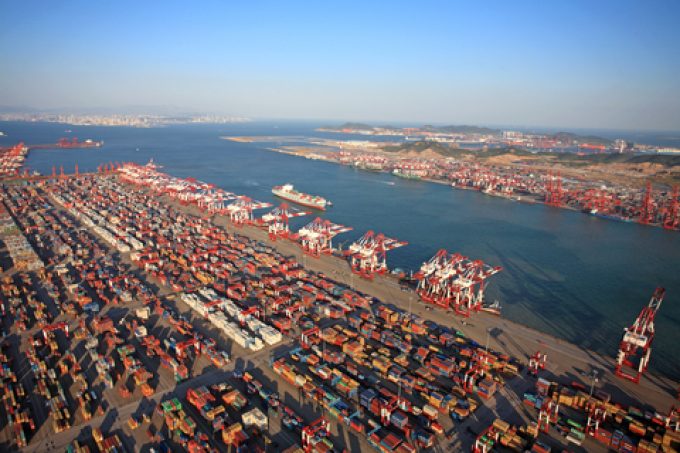Zim enjoys record growth at double the market rate
Israeli container shipping line Zim beat Wall St expectations after reporting healthy third-quarter results, which ...
MAERSK: BULLISH CALLXPO: HEDGE FUNDS ENGINEF: CHOPPING BOARDWTC: NEW RECORDZIM: BALANCE SHEET IN CHECKZIM: SURGING TGT: INVENTORY WATCHTGT: BIG EARNINGS MISSWMT: GENERAL MERCHANDISEWMT: AUTOMATIONWMT: MARGINS AND INVENTORYWMT: ECOMM LOSSESWMT: ECOMM BOOMWMT: RESILIENCEWMT: INVENTORY WATCHDSV: GREEN LIGHT AMZN: TOP PICK
MAERSK: BULLISH CALLXPO: HEDGE FUNDS ENGINEF: CHOPPING BOARDWTC: NEW RECORDZIM: BALANCE SHEET IN CHECKZIM: SURGING TGT: INVENTORY WATCHTGT: BIG EARNINGS MISSWMT: GENERAL MERCHANDISEWMT: AUTOMATIONWMT: MARGINS AND INVENTORYWMT: ECOMM LOSSESWMT: ECOMM BOOMWMT: RESILIENCEWMT: INVENTORY WATCHDSV: GREEN LIGHT AMZN: TOP PICK

Global demand for ocean freight container shipping has hit a record level, surpassing peak-Covid demand, but leaving shippers with a big question about the traditional peak season.
Recent data from Xeneta and Container Trade Statistics revealed that the 15.94m teu transported via ocean in May overtook the previous record of 15.72m teu reached in May 2021, at the height of the pandemic.
Xeneta’s senior shipping analyst, Emily Stausbøll, said: “More containerised goods are being shipped by ocean than ever before, at a time when available capacity is impacted by diversions around Africa due to conflict in the Red Sea and severe port congestion in Asia and Europe.
“This is a perfect storm of pressure on ocean supply chains, which has resulted in the chaos of recent months.”
Xeneta said the record-breaking level of global demand had been driven primarily by volumes out of the Far East. China exports reached an all-time high of 6.2m teu in May, accounting for a whopping 39% of the month’s reported global container trade.
Ms Stausbøll added: “Given we are already seeing record-breaking volumes ahead of the traditional peak season in Q3, you can understand why shippers are so concerned.”
The big question, said Ms Stausbøll, was whether record volumes now would mean reduced volumes in the traditional peak season.
“Numerous factors come into play, not only of underlying consumer demand, but also nervous shippers front-loading imports and the potential for further tariffs on imports from China.
“While this combination could keep demand high through the next few months, there must be a limit to how long the record levels of demand can last,” she said.
Meanwhile, carriers are still doing what they can to respond to the demand – The Loadstar reported last month that idle tonnage had reached pandemic-level lows of 0.7%.
Indeed, said Ms Stausbøll: “In many respects, it is impressive that global shipping networks have been able to transport this enormous volume of containers under such challenging circumstances.”
And yesterday, Alphaliner revealed that vessel sale and purchase deals had surged in the first six months of the year, “as carriers and NOOs reacted to the red-hot charter and freight markets”.
Over half a million teu of container tonnage across 141 vessels changed hands during this period, according to Alphaliner, averaging 23 ships a month changing hands. This compares with an average of 15 a month in H2 23.
“Despite an increase in freight rates from September, there was no immediate reaction in the second-hand market, with many carriers believing the crisis to be a short-term issue,” explained Alphaliner.
“Realisation that there was no quick solution saw a change of heart from January onwards.”
Comment on this article